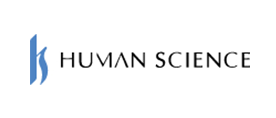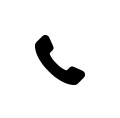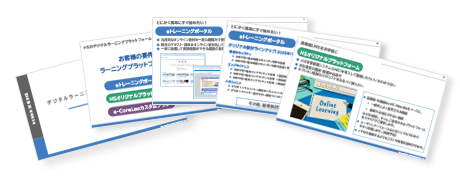2022.10.14
To avoid compliance violations due to copyright infringement
In modern times, the proliferation of the internet has advanced digital networking, creating an environment where various information can be easily accessed. On the other hand, this information can be easily copied by anyone, making it essential to acquire morals and knowledge regarding intellectual property rights (the rights granted to those who create something through intellectual creative activities).
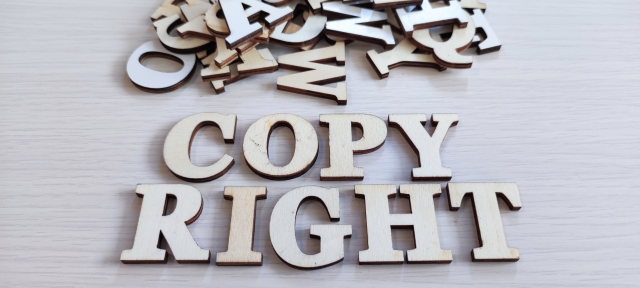
Among intellectual property rights, the one we are particularly familiar with is "copyright." For example, when creating materials for work, have you ever quoted data or text from the internet? At that moment, have you ever felt a sudden worry, thinking, "Is this a violation of copyright?"
This time, we will focus on copyright, which may seem familiar yet is often misunderstood. We will introduce an overview of copyright, points to consider when dealing with copyrighted works, examples of copyright infringement, and explain key points to prevent copyright infringement.
1. Copyright and Works You Should Know About
Intellectual property rights that protect the results of people's wide-ranging intellectual and creative activities can be broadly classified into "copyrights" that protect cultural and spiritual creations, "industrial property rights" such as patent rights, utility model rights, design rights, and trademark rights, and "others".
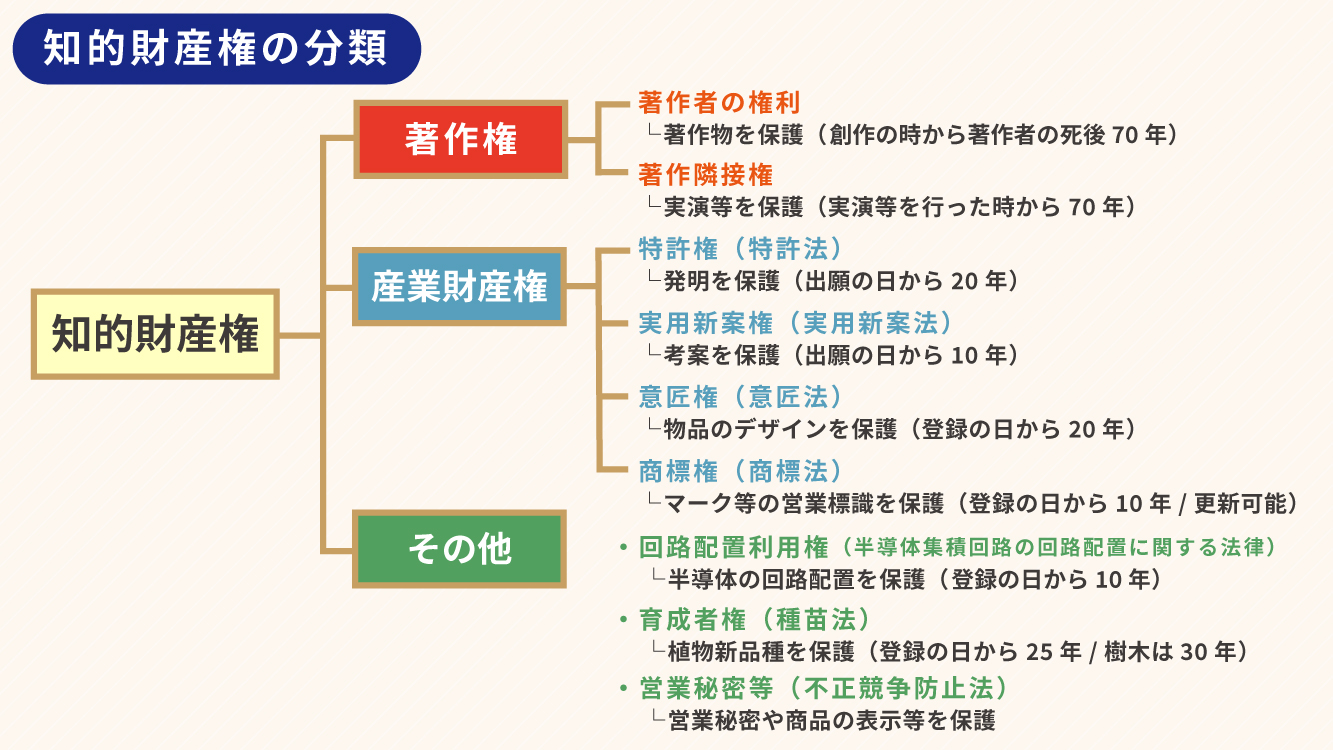
[Source: Agency for Cultural Affairs] About Intellectual Property Rights (https://www.bunka.go.jp/seisaku/chosakuken/seidokaisetsu/chitekizaisanken.html)
Industrial property rights require procedures such as applications and registrations to obtain rights, whereas copyright does not require any such procedures and is automatically granted at the moment a work is created, according to international rules. As a result, the "borderline of rights" is ambiguous and difficult to understand, leading to many cases where it is challenging to determine what constitutes copyright infringement.
Let's first deepen our understanding of what copyright is.
●What is Copyright
We enjoy our lives by regularly gaining knowledge through the internet and reading, watching videos and television, and appreciating movies and music, engaging with various information and entertainment. Creative works in literature, academia, art, and music are expressions of the creator's thoughts and emotions, referred to as "copyrighted works." The creators of these works are called "authors," and the rights granted to authors are known as "copyrights." Protecting copyrights to prevent infringement rewards the efforts and struggles of the authors who created these works, aiming to promote the development of Japanese culture.
Additionally, copyright rules are established by a law called the "Copyright Act."

●What is a work?
To be considered a work protected by copyright law, it is necessary to meet all of the following requirements.
【1】It expresses "thoughts or feelings"
→ Only mere data is excluded
【2】It is something that "expresses" thoughts or feelings
→ Ideas and the like are excluded
【3】It is an expression of thoughts or feelings in a creative manner
→ Mere imitation of others' works is excluded
【4】Belongs to the range of literature, academia, art, or music
→ Industrial products, etc. are excluded
Examples of works include the following specific items.
1. Literary works……novels, scripts, papers, poetry, haiku, speeches, etc.
2. Musical works……musical compositions and lyrics
3. Dance and pantomime works……Japanese dance, ballet, dance choreography, etc.
4. Artistic works……paintings, sculptures, manga, calligraphy, stage sets, etc. (including decorative arts)
5. Architectural works……artistic buildings (design drawings are considered graphic works)
6. Maps and diagrams……maps or academic drawings, charts, blueprints, models, etc.
7. Photographic works……photographs, gravure, etc.
8. Film works……theatrical films, television programs, video software, game software, video content uploaded to video sites, etc.
9. Program works……computer programs
In addition to the above, secondary works (newly created works that translate, arrange, transform, or adapt the above works), edited works (encyclopedias, dictionaries, newspapers, magazines, etc.), and database works (edited works that can be searched by computer) also qualify as copyrighted works.

2. Copyright Law Protecting Two Rights
The content of copyright law is broadly divided into two parts. One is the "moral rights of authors" to protect the personal interests of the author. The other is the "copyright (property rights)" that protects economic interests.
【Moral Rights】
These are the rights to protect the personality of the author expressed through their works. Moral rights can only be held by the author and cannot be transferred or inherited. They generally expire upon the author's death, but actions that infringe upon moral rights should not be taken even after the author's death.
Types of Moral Rights
・Right of Disclosure……The right of the author to decide whether or not to disclose the work, and if disclosed, when and how to do so.
・Right of Attribution……The right of the author to decide whether or not to display their name on the work, and if displayed, whether to use their real name or a pen name.
・Right of Integrity……The right to prevent unauthorized changes to the content or title of the work against the author's will.
【Copyright (Property Rights)】
This is the right to prohibit others from using it without permission in order to protect the economic interests of the author. Unlike moral rights, it is possible to transfer or inherit part or all of the rights to a third party.
Types of Copyright (Property Rights)
・Reproduction Right……The right to "reproduce in a tangible form" a work through any means such as printing, photography, copying, recording, or video
・Performance Right……The right to publicly perform or play a work
・Screening Right……The right to publicly screen a work
・Public Transmission Right/Communication Right……The right to transmit or communicate a work via television, radio, the internet, etc.
・Recitation Right……The right to orally convey a linguistic work to many people through methods such as reading aloud
・Exhibition Right……The right to publicly exhibit works of art or photographs (unpublished ones)
・Distribution Right……The right to sell or lend a work of film
・Transfer Right……The right to provide works other than films or their reproductions to the public through methods such as sale
・Lending Right……The right to lend reproductions of works other than films to the public
・Translation Right/Adaptation Right, etc.……The right to create derivative works through translation, arrangement, transformation, adaptation, etc.
・Rights of the Original Author Regarding the Use of Derivative Works……The rights held by the original author regarding the use of derivative works created from their own works (original works)
3. Points to Consider When Handling Copyrighted Works in Business
So far, we have explained the overview of copyright and copyright law, but what specific points should we be aware of in our business operations? In this chapter, we will discuss the key points that companies should pay attention to when handling copyrighted works.
●Permission from the author is generally required when using copyrighted works. However, there are exceptions.
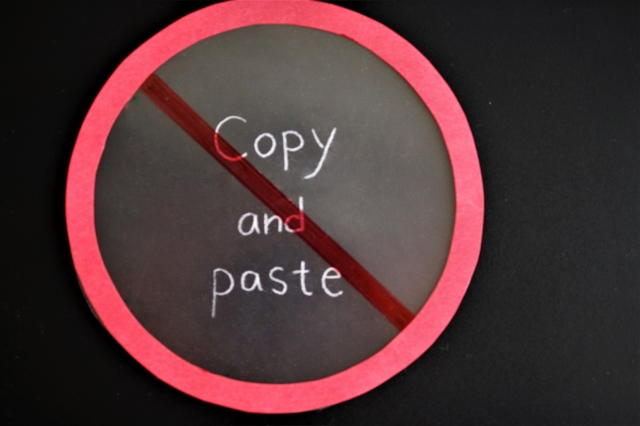
In principle, permission from the author is required to use a work. However, there is an exception that states, "If used within a limited scope, such as for personal or household purposes, it is generally not considered copyright infringement, and reproduction is possible without obtaining permission" (Article 30, Paragraph 1 of the Copyright Act). This is referred to as the "private use" of a work.
What about the use in business? Let's consider a case where company materials are created using copyrighted works. Sharing the materials with only a small number of employees may be considered "private use" and might not be seen as copyright infringement. However, creating materials is a business activity. It cannot be considered private use, and using them without permission would be regarded as copyright infringement. Therefore, the key to solving this problem is "quoting copyrighted works."
●There are requirements for quoting works
Article 32, Paragraph 1 of the Copyright Act states that "even copyrighted works do not constitute copyright infringement when used as quotations." In other words, even when using a work for business purposes, if it is in the form of a quotation, it does not constitute copyright infringement, and permission from the author is not required. However, all of the following requirements must be met for copyright quotations.
【Requirements for Copyright Citation】
1. There must be a necessity for citation
2. The cited part must be clearly distinguished from the rest
3. The main text should be primary, and the cited part should be secondary
4. The cited part must not have been altered from the original
5. The source must be clearly indicated (such as author name, publisher name, publication date, page number, etc.)
For example, in the case of (3), if the quoted portion occupies the majority, it may be considered that the primary and secondary relationships are reversed, so caution is required. Additionally, arbitrarily adjusting the quoted text or illustrations would violate (4), constituting copyright infringement. When making a citation, keep in mind the five requirements and consider them carefully.
●Always check the terms even for 'free materials'
Many people may use free materials for illustrations and images to accompany their documents. Generally, free materials can be interpreted as resources that are free to use without restrictions, but it does not necessarily mean that the author has waived all rights. For example, there may be certain restrictions on usage, such as prohibitions on commercial use or requirements for contacting the rights holder or providing credit. Since the terms of use for these materials vary by site, it is important to properly check the scope of the usage rights.
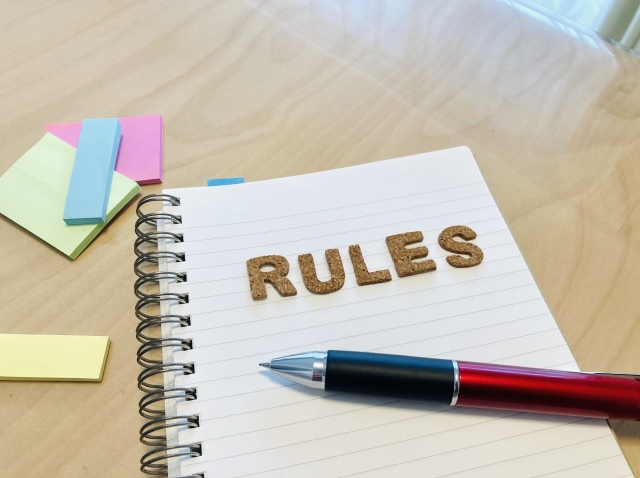
●Be aware of copyright when using social media
Recently, it has become common for companies to utilize social media for public relations and PR activities. Of course, awareness of copyright is also required when using social media. For example, introducing recommended books on social media may also constitute copyright infringement. This is because Article 23, Paragraph 1 of the Copyright Act states, "The author has the exclusive right to publicly transmit (including making it available for transmission in the case of automatic public transmission) their work," and the term "public transmission" mentioned here includes not only television and radio but also web content and social media posts.
In other words, posting copyrighted works on social media without permission infringes on the right of public transmission, leading to the risk of being pointed out for copyright infringement. Additionally, taking photographs of books and using image data also infringes on the reproduction right as stated in Article 21 of the Copyright Act, which states, "The author has the exclusive right to reproduce their work."
(*) The content of the book, of course, as well as the cover, is considered a work of authorship.
4. Examples of Copyright Infringement in Corporations
Copyright is a very familiar presence in corporate activities. Therefore, it is possible that a simple "oversight" could lead to unexpected troubles. Here, we will introduce examples of copyright infringement in companies.
CASE.1 Compensation Order for Posting Company for Unauthorized Reproduction of Residential Maps
A posting company was sued for unauthorized mass reproduction and distribution of residential map products issued by a company that manages and sells map information, seeking an injunction against copyright infringement. In a ruling made in May 2022, the court recognized that residential map products qualify as copyrighted works, and the posting company was ordered to cease the infringing activities and pay damages.
The Tokyo District Court determined that the residential map products are copyrighted works under copyright law, stating that they are "selected and displayed in a way that is considered more visually accessible, based on the information deemed necessary for residential maps."
CASE.2 Newspaper sues railway company for unauthorized use of article
The railway company, from the opening in August 2005 until April 2019, unlawfully digitized images of newspapers and articles published by a newspaper company. These were posted on the company's internal intranet, accessible to all employees, infringing the newspaper company's copyright for about 14 years. The number of articles involved was approximately 4,200, and the newspaper company filed a lawsuit against the railway company seeking damages of about 35 million yen, including the equivalent of usage fees. Furthermore, the railway company is also facing lawsuits for similar copyright infringements from another newspaper company.

In either case, it can be said that the troubles could have been prevented with an understanding of copyright. This is a case that reinforces the importance of compliance measures and employee education to prevent careless copyright infringement by employees.
5. To Prevent Copyright Infringement
Actions taken in the course of business can unintentionally lead to copyright infringement, and this can happen to anyone. However, as seen in cases of copyright infringement, the penalties are never light. That is why it is essential for each employee to acquire the correct knowledge about copyright.
In addition, the copyright law has been amended by the revised law enacted in 2020 to reflect the current context, including "strengthening regulations against illegal downloads" and "reach measures." As information is updated daily, it is important to "regularly learn correct knowledge."
Therefore, we would like to propose e-learning as an efficient learning strategy. Compared to paper materials, updates are quick, allowing you to learn fresh information. Additionally, being online means you are not restricted by time or location, making it convenient to study during your spare moments while on the go.
The e-learning material on human science, "Compliance Measures in the Workplace: Basic Knowledge Edition," covers the fundamental knowledge of compliance in general. It supports understanding the importance of compliance through learning, enabling individuals to take conscious actions in their daily lives. Furthermore, by studying alongside the "Compliance Measures in the Workplace: Practical Edition," where practical knowledge can be learned in more specific scenarios, a deeper understanding can be expected.
Our materials are regularly reviewed and updated, and new courses are added. By the end of the year, new courses, including those on copyright, will be added to allow for broader learning opportunities. Additionally, based on customer requests, it is also possible to customize the content to better match the specific circumstances of each company.
In today's rapidly advancing information age, it is expected that laws and morals related to compliance, including copyright, will continue to be updated in line with this trend. To raise employee awareness and avoid unexpected troubles, we recommend conducting regular in-house training through e-learning to acquire the latest knowledge.
Author:
Shizuko Sase
Education Solutions Department Production Group Writer
After joining Human Science, worked as a technical writer,
gaining experience in the design and writing of product manuals and operational manuals.
Subsequently engaged in writing and production direction of e-learning materials.
Involved in the production of approximately 200 educational materials to date.
Contact Information:
Phone Number: 03-5321-3111
hsweb_inquiry@science.co.jp




